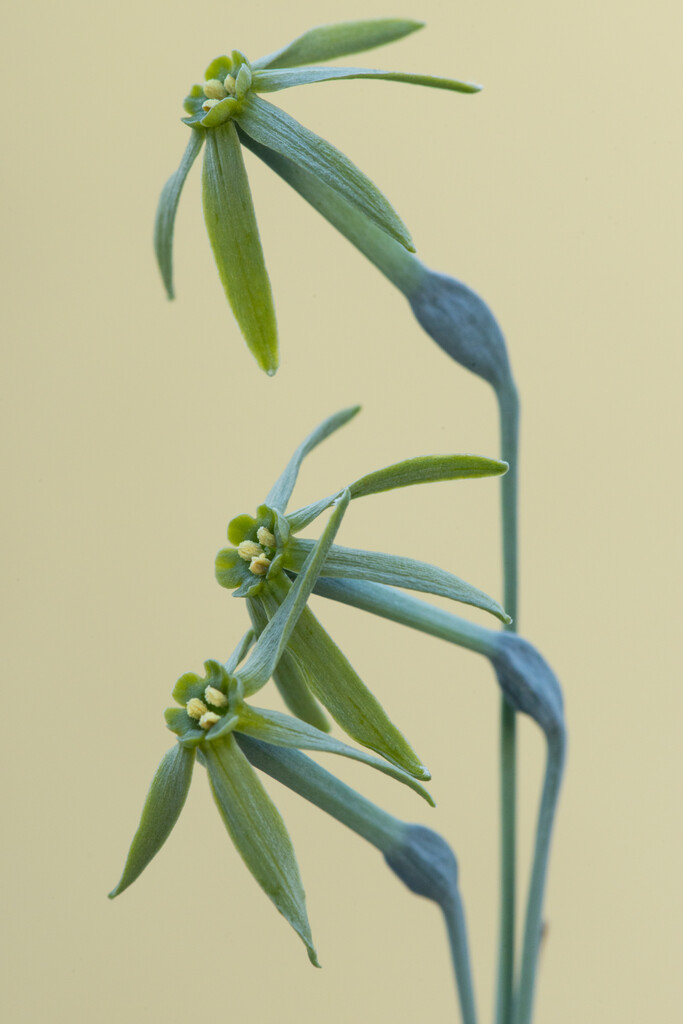Narcissus viridiflorus (13)
A bulbous perennial, up to 35cm high, with one or two, narrow rush-like green leaves. Flowers are strongly scented and distinctive, with narrow, olive-green, swept back petals, and are produced in clusters of up to five to a stem in autumn. In years when flowers are produced, the bulbs may not produce any leaves

Size
Ultimate height
0.1–0.5 metresTime to ultimate height
1–2 yearsUltimate spread
0–0.1 metreGrowing conditions
Moisture
Moist but well–drainedpH
Acid, Alkaline, NeutralColour & scent
| Stem | Flower | Foliage | Fruit | |
| Spring | ||||
|---|---|---|---|---|
| Summer | ||||
| Autumn | Green | Green | ||
| Winter |
Position
- Full sun
- Partial shade
Aspect
South–facing or West–facing
Exposure
Sheltered Hardiness
H4Botanical details
- Family
- Amaryllidaceae
- Native to GB / Ireland
- No
- Foliage
- Deciduous
- Habit
- Clump forming, Columnar upright
- Potentially harmful
- Harmful if eaten, skin irritant. Wear gloves and other protective equipment when handling. Pets (dogs, cats, tortoises): Harmful if eaten, skin irritant. For further information and contact numbers regarding pets, see the HTA guide to potentially harmful plants
- Genus
Narcissus are bulbous herbaceous perennials with linear leaves and leafless stems bearing flowers, which may be solitary or in umbels, with 6 spreading perianth segments and a cup or trumpet-shaped corona
- Name status
Correct
- Horticultural Group
- Division 13 daffodils include all natural species and their varieties and forms
- Plant range
- SW Spain, Morocco
How to grow
Cultivation
Thrives in rich, well-drained soil in full sun. This species benefits from being kept relatively warm and almost dry while dormant. Best grown in containers that can be protected or moved indoors over winter
Propagation
Propagate by seed, by division, or by chipping. See bulb propagation for details
Suggested planting locations and garden types
- City and courtyard gardens
- Cottage and informal garden
- Mediterranean climate plants
- Patio and container plants
- Conservatory and greenhouse
Pruning
Deadhead as flowers fade. Allow the leaves to die down naturally
Pests
May be susceptible to slugs, large narcissus bulb fly, narcissus eelworm, and bulb scale mite on bulbs forced for early flowering
Diseases
May be susceptible to narcissus basal rot, narcissus leaf scorch or daffodil viruses
Get involved
The Royal Horticultural Society is the UK’s leading gardening charity. We aim to enrich everyone’s life through plants, and make the UK a greener and more beautiful place.